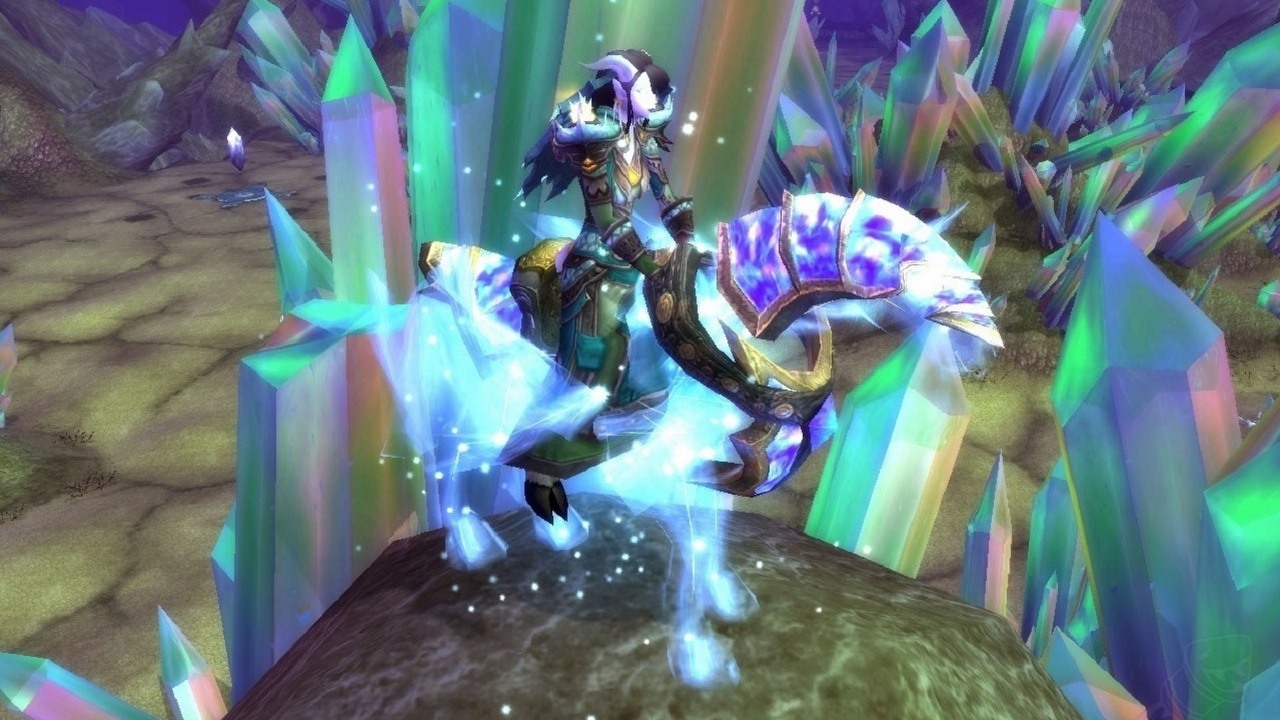StarCraft 2 Earned Less Than WoW's Shiny Pony; Blizzard Thrives on Microtransactions
The developer of StarCraft 2: Wings of Liberty says in the first two years after its release the game earned less for Blizzard than a certain mount for World of Warcraft. 'This is why companies rely on microtransactions,' he says.

Why are the coolest skins in Diablo IV only available in the store? Why is Blizzard tempting players with 3-day early access to World of Warcraft: The War Within, which costs as much as 40 euros more than the standard version? The answer to these questions is as simple as it is sad - because people are buying it. Sometimes more willingly than games themselves.
A great example of this is the information shared some time ago by Jason T. Hall - currently an independent developer who worked for Blizzard as a tester for WoW between 2004 and 2009, and by 2016 as a full-time employee co-developing such games as StarCraft II: Wings of Liberty, Diablo III, Heroes of the Storm and Overwatch, as well as several WoW expansions.
In one of the videos (below), which he regularly posts on his studio's YT channel - Pirate Software - Hall revealed that "in the first two years, the $15 mount for World of Warcraft has earned more than StarCraft II: Wings of Liberty". Considering the period in which the game came out - around 2010 - one can guess that the mount in question is Celestial Steed. It made its way into WoW on April 15, 2010 and originally cost $25, not $15 as Hall claims.
WoW players have rushed at this mount - a server queue of 140,000 people was formed. It took abour seven hours to get to the front of the line. In this short period alone, revenue from microtransactions in Blizzard's store amounted to about $3.5 million (also quite popular was the pet Lil' XT).
StarCraft II: Wings of Liberty on the other hand, it cost $60 at launch. In the first month after its debut it sold 3 million copies, and in the span of three years - 6 million copies. (As of 2014, the game is available for free). This, of course, gives incomparably more revenue, but one must take into account that producing the game was much more expensive than creating a skin for a mount.
So even if Hall exaggerated a bit, the case in question from more than a decade ago emphatically demonstrates why microtransactions have become firmly established in video games - over time infiltrating single-player titles as well, such as the Assassin's Creed series - becoming an industry standard, so to speak. First, they find many takers. Secondly, they bring huge profits at relatively low cost.
- WoW: Midnight gets a release date, but it's later than we thought. Blizzard lowers the price of a popular feature, and players celebrate
- Hacker stole his WoW account. When the player got it back, he couldn't believe his luck
- Housing in WoW: Midnight seems to have a hidden purpose. New trailer may reveal what players will be able to do
0

Author: Hubert Sledziewski
Has been writing professionally since 2016. He joined Gamepressure.com five years later - although he has known the service since he had access to the internet - to combine his love for words and games. Deals mainly with news and journalism. A sociologist by education, a gamer by passion. He started his gaming adventure at the age of four - with a Pegasus. Currently, prefers PC and demanding RPGs, but does not shy away from consoles or other genres. When he's not playing or writing, he enjoys reading, watching series (less often movies) and Premier League matches, listening to heavy music, and also walking the dog. Almost uncritically loves the work of Stephen King. Does not abandon plans to follow in his footsteps. However, he keeps his first "literary achievements" locked away deep in a drawer.
Latest News
- Ellie from The Last of Us inspired the creature in Bruce Straley's new game
- Larian Studios CEO explains generative AI use in development of Divinity
- Kojima Productions celebrates its big 10th anniversary with an upgraded Ludens
- They didn't conquer TGA, but they were still very successful. Now they are thanking the fans in the best possible way
- Pawel Sasko revealed his favorite Cyberpunk 2077 ending and explained what CD Projekt Red wanted to say to players through the saddest one


